In the complex process of modern industrial production, efficient and accurate screening operations are the key link to ensure product quality and production efficiency. With the continuous advancement of science and technology, screening equipment is also continuously iterating and updating. As a new product in the field of screening, the swing screen is bringing new solutions to many industries with its excellent performance and innovative design. This article will explore the wide range of functions of the swing screen in depth.
1.Role in the mining field
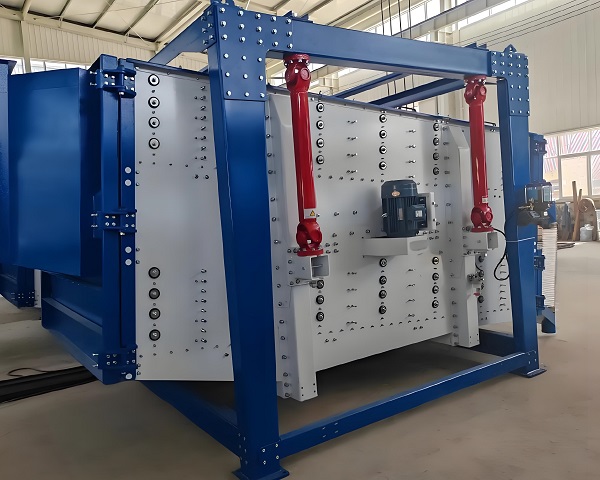
Swing Screen
Ore classification and selection: In the mining process, the ore mined from the underground often contains particles of various sizes and is mixed with various impurities. The swing screen can accurately classify the ore according to the particle size and separate ore particles of different sizes. For example, in gold mining, the ore can be divided into different levels such as coarse particles, medium particles and fine particles according to the particle size through the swing screen, and then the corresponding mineral processing technology is adopted for different levels of ore to improve the recovery rate of gold. At the same time, for some symbiotic ores, the swing screen can initially separate different minerals according to the particle size difference, which facilitates the subsequent selection operation and greatly improves the selection efficiency and concentrate quality of the ore.
Tailings treatment and resource recovery: A large amount of tailings are produced during the mining process, and these tailings often contain a certain amount of valuable minerals. The swing screen can re-screen the tailings and further recover the useful mineral particles remaining in them. For example, in iron ore tailings, some iron minerals that have not been completely extracted can be recovered through swing screen screening, which not only reduces resource waste, but also reduces the potential harm of tailings to the environment. In addition, the tailings after screening can be reasonably used according to the particle size, such as for the production of building materials, to maximize the utilization of resources.
2. Role in the chemical industry
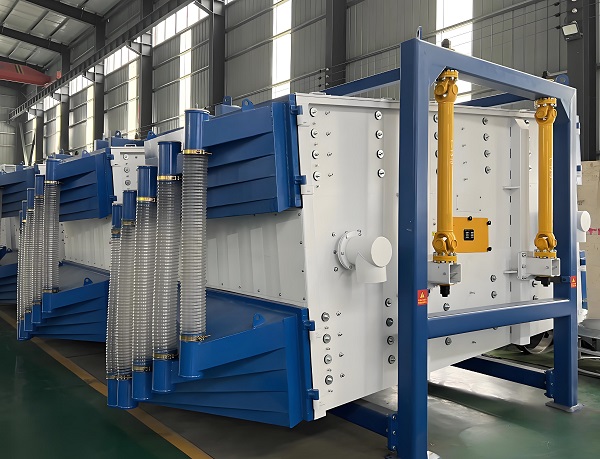
Swing Screen
Raw material pretreatment and product quality control: In chemical production, many raw materials need to undergo strict screening to ensure that their particle size meets the production process requirements. For example, in the production process of plastic particles, the swing screen is used to screen plastic raw materials, remove impurities and oversized or undersized particles, and ensure that the quality of raw materials entering the production equipment is uniform and stable, thereby improving the quality stability and consistency of plastic products. For some chemical products, such as pigments, coatings, etc., the swing screen performs final screening before product packaging, which can remove lumps and foreign matter in the product, ensure the fineness and dispersion of the product, and enhance the market competitiveness of the product.
Improve production efficiency and reduce costs: Chemical production is usually characterized by continuity and large-scale, and efficient screening equipment is essential to improve production efficiency. The large processing capacity and high screening accuracy of the swing screen can quickly screen out materials that meet the requirements, reducing material backlogs and waste during the production process. For example, in fertilizer production, the swing screen can quickly screen out fertilizer particles of different particle sizes, realize the graded packaging of products, improve production efficiency and reduce production costs. At the same time, because the swing screen can effectively avoid screen blockage, it reduces the downtime and maintenance time of the equipment, and further improves the continuity and stability of production.
3. Role in the food industry
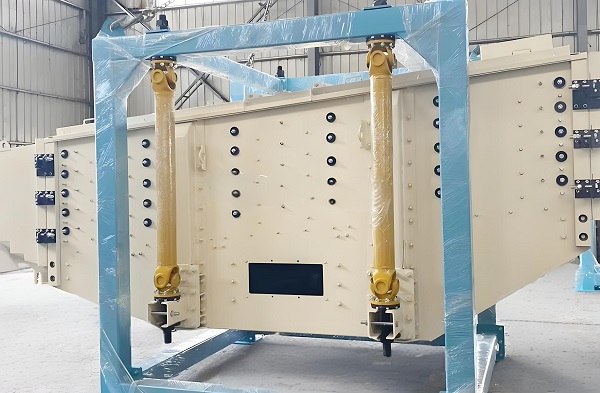
Swing Screen
Raw material screening and impurity removal: The food industry has extremely high requirements for the quality and safety of raw materials. The swing screen plays a key role in the processing of food raw materials such as grains, cereals, and starch. It can accurately screen out impurities in raw materials, such as stones, soil, straw, etc., to ensure that the raw materials entering the food processing link are pure and pollution-free. In flour processing, the swing screen can remove impurities and immature wheat grains in wheat, and improve the purity and quality of flour. For some granular food raw materials, such as candy, chocolate beans, etc., the swing screen can be graded according to the particle size to ensure the consistency of product specifications during packaging and sales.
Ensure food safety and hygiene: The hygiene standards in the food production process are strict. The fully sealed structure design of the swing screen can effectively prevent external pollutants from entering the material, while preventing the material from flying dust and reducing the risk of cross contamination. In the production process of food additives, condiments, etc., the swing screen can finely screen the raw materials and finished products to ensure that the products meet food safety standards. In addition, the screen material of the swing screen is usually selected from materials that meet food hygiene requirements, such as food-grade stainless steel, etc., and is easy to clean and maintain, which can meet the strict requirements of the food industry for equipment hygiene.
4. Role in the pharmaceutical industry
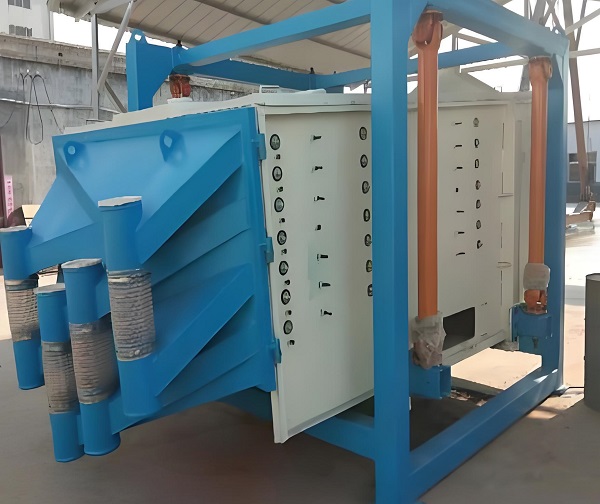
Swing Screen
Screening of pharmaceutical raw materials and finished products: The pharmaceutical industry has extremely stringent requirements on the purity and particle size of drugs. The oscillating screen is used to finely screen the raw materials in the production process of Chinese medicine powder, Western medicine powder and health care product granules to ensure the uniformity and particle size consistency of the drug ingredients. For example, in the production of Chinese medicine pills, the oscillating screen screens the Chinese medicine powder to ensure that the fineness of the powder meets the production requirements, thereby improving the quality and efficacy stability of the pills. For the production of Western medicine tablets and capsules, the oscillating screen can classify the drug particles to ensure that the drug can accurately release the drug ingredients when taken, and improve the efficacy and safety of the drug.
Meet the high standards of pharmaceutical production: Pharmaceutical production must follow strict quality control systems and regulatory standards. The high-precision screening performance of the oscillating screen can meet the strict requirements of the pharmaceutical industry for the particle size distribution of drugs, ensuring the stability and consistency of drug quality. At the same time, its low noise and low vibration operating characteristics meet the environmental requirements of pharmaceutical production workshops, avoiding interference with other precision equipment and drug quality. In addition, the design and manufacture of the oscillating screen meet the GMP (Good Manufacturing Practice) requirements of the pharmaceutical industry. The equipment surface is smooth and has no dead corners. It is easy to clean and disinfect, effectively preventing cross contamination during the drug production process and ensuring the quality and safety of drugs.
5. Role of the building materials industry
In the production process of building materials such as cement, lime, and sand, the swing screen is used to screen and grade granular materials. For example, in cement production, the cement clinker is screened by the swing screen to control the particle size distribution of cement, thereby affecting the performance indicators of cement such as setting time and strength. For construction sand, the swing screen can classify the sand into coarse sand, medium sand, and fine sand according to the particle size according to different construction needs to meet the requirements of different concrete mix ratios. In the production of dry mortar, the swing screen can accurately screen and mix various raw materials to ensure the stable quality of dry mortar.
6. Role of the wood and plywood industry
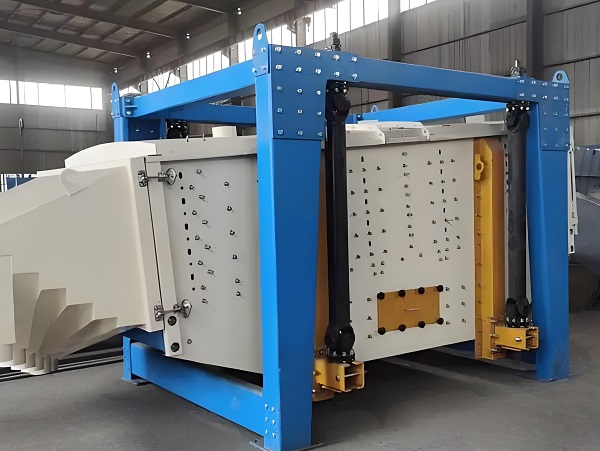
Swing Screen
In the wood processing process, the swing screen can be used to screen sawdust and wood powder. Removing impurities and fine particles in sawdust can improve the performance of sawdust in the production of artificial boards and ensure the quality of boards. For raw materials such as adhesives and veneer in the production process of plywood, the swing screen can also be screened and selected to remove foreign matter and ensure the gluing quality and appearance flatness of plywood.
7. Role in other industries
Metallurgy, rubber, feed, fertilizer, sugar and salt industry, recycling industry, etc.: In the metallurgical industry, the swing screen is used to screen and grade metal powders, ore particles, etc., to provide raw materials that meet the requirements for metal smelting. In the rubber industry, it is used to screen rubber particles, additives, etc. to ensure the quality of rubber products. In the feed industry, feed raw materials are screened to remove impurities and ensure the quality of feed. In the fertilizer industry, in addition to grading fertilizer particles, it can also be used to screen intermediate products in the fertilizer production process. In the sugar and salt industry, it is used to screen and grade sugar particles and salt particles to meet different market needs. In the recycling industry, such as waste plastic recycling, waste metal recycling, etc., the swing screen can perform preliminary screening and classification of recycled materials to improve the efficiency of resource recycling.
Swing screens play a key role in many industries. In the mining industry, it can achieve accurate grading and selection of ores, improve recovery rates, and help reuse tailings resources; in the chemical industry, it can ensure raw material quality, control product quality, improve production efficiency and reduce costs; in the food industry, it can screen raw material impurities to ensure food safety and hygiene; in the pharmaceutical industry, it can ensure that the particle size of pharmaceutical raw materials and finished products meets the standards and meets high-standard production requirements; in addition, in the building materials, wood, metallurgy and other industries, it is also used for material screening and grading, optimizing production processes and improving product quality. It is an indispensable screening equipment in industrial production.